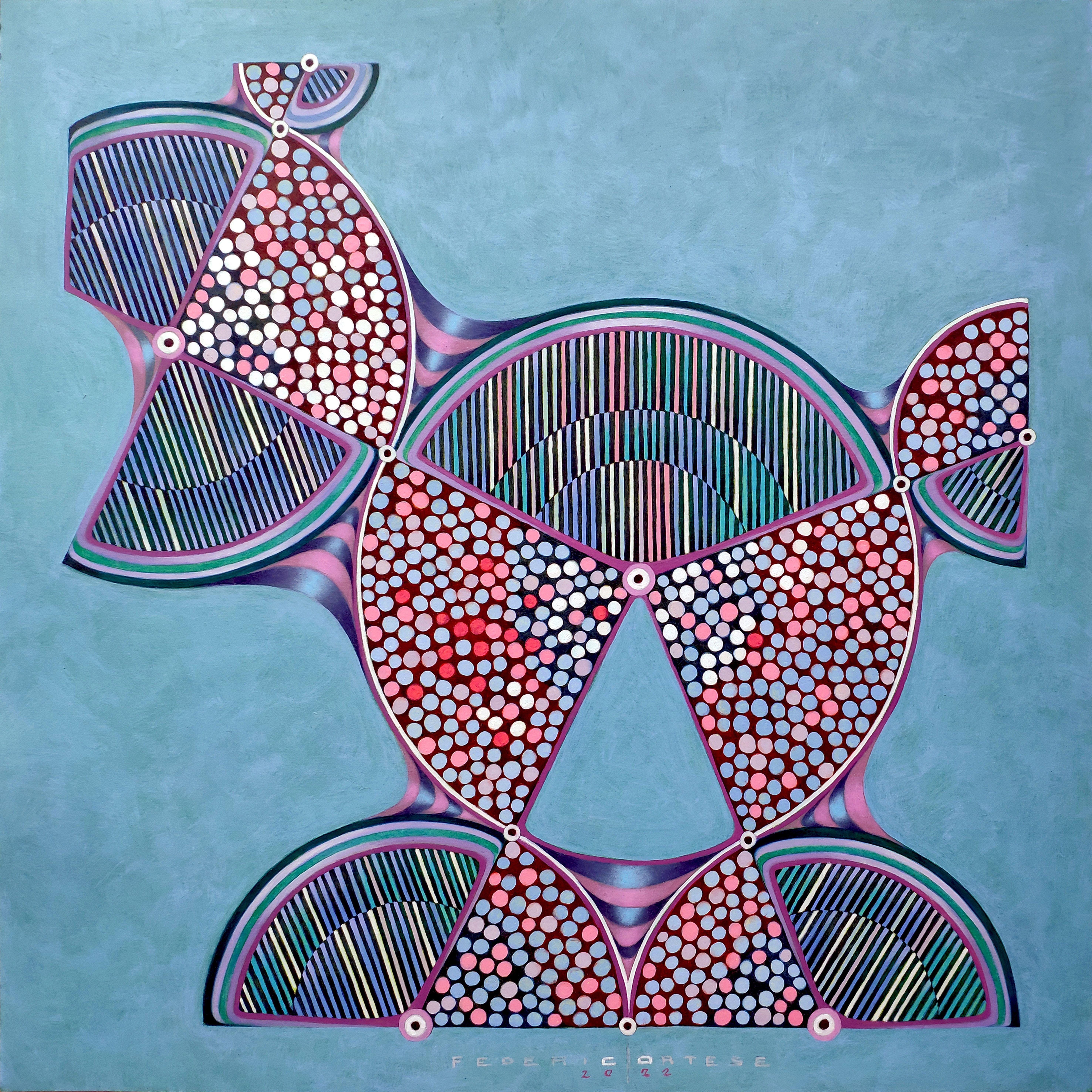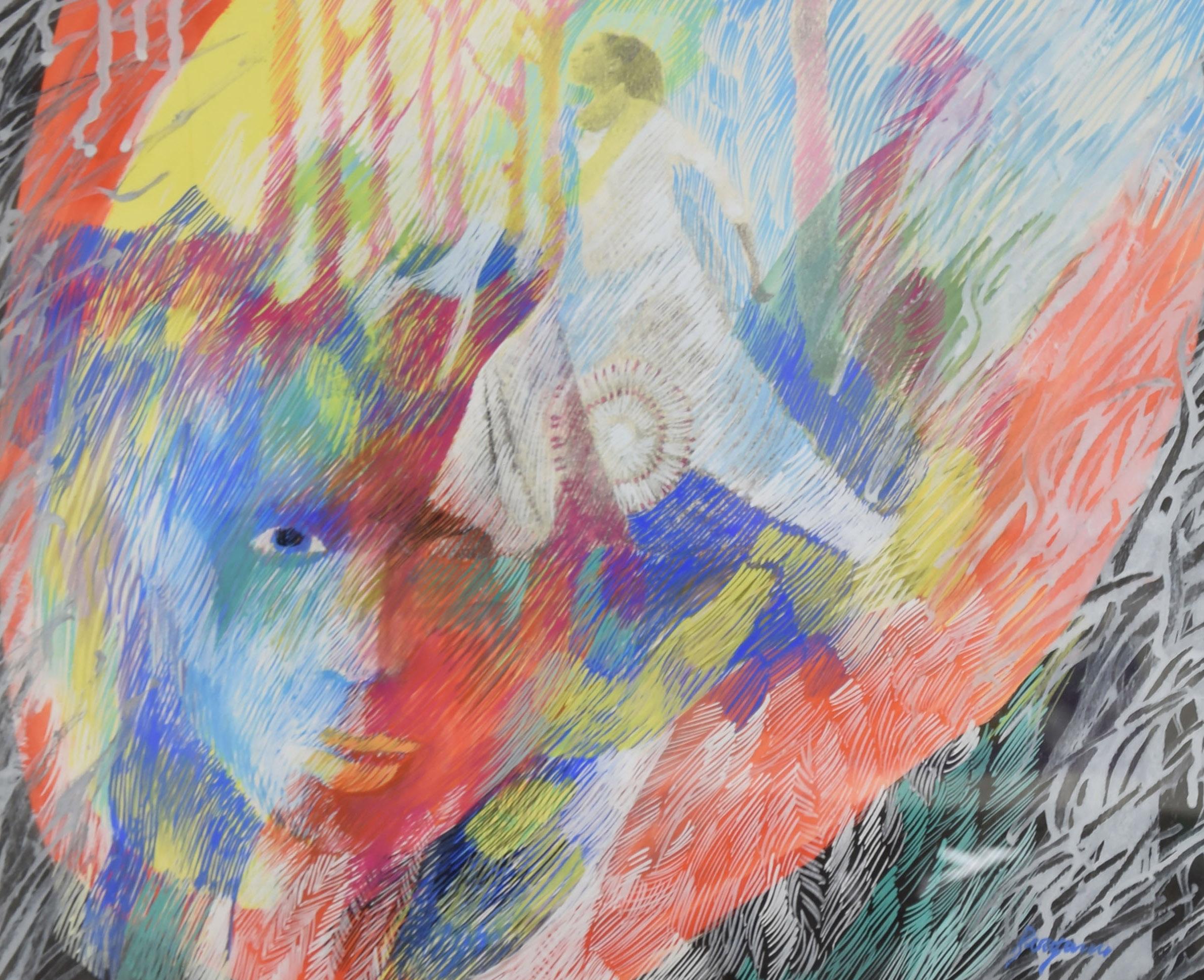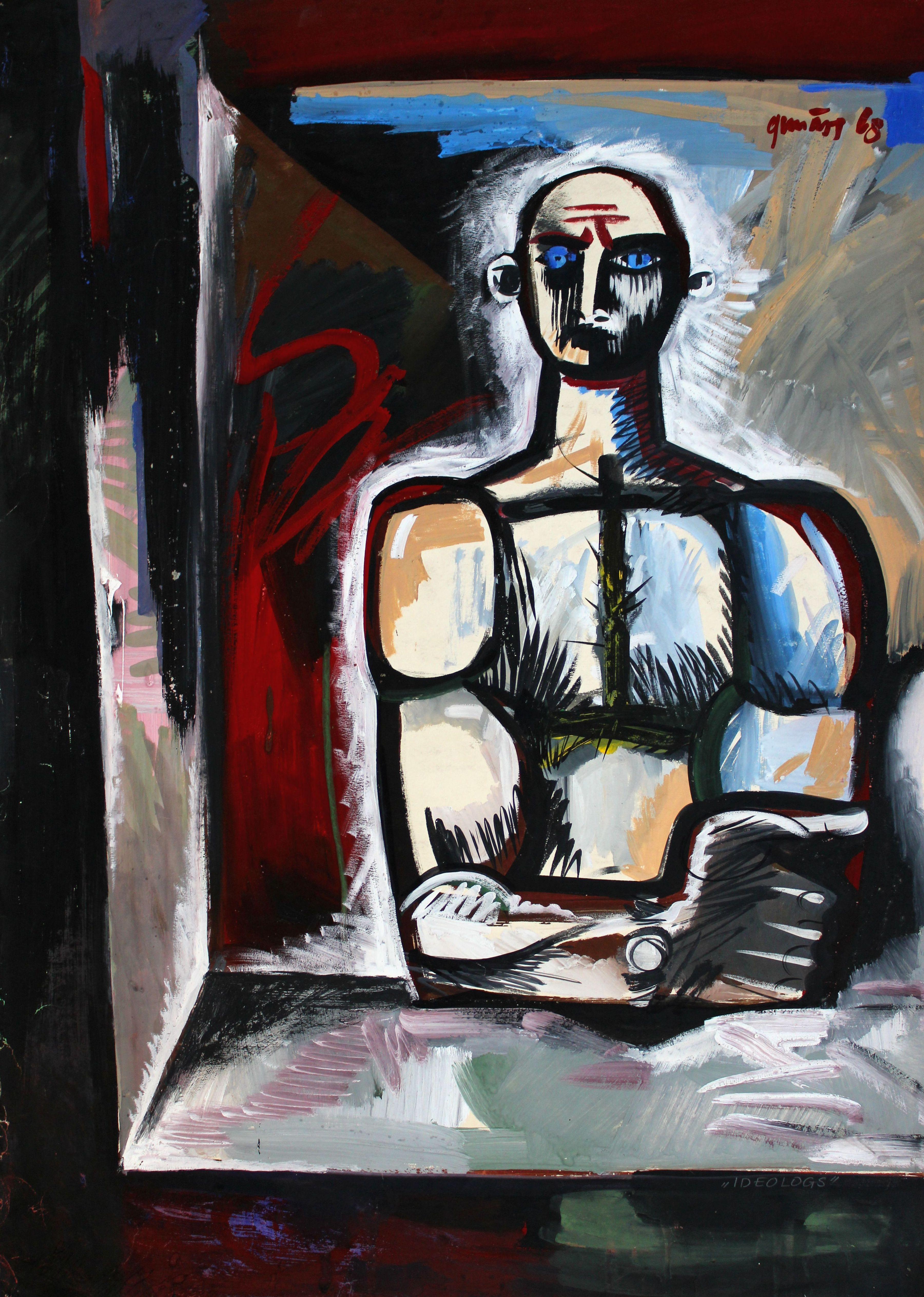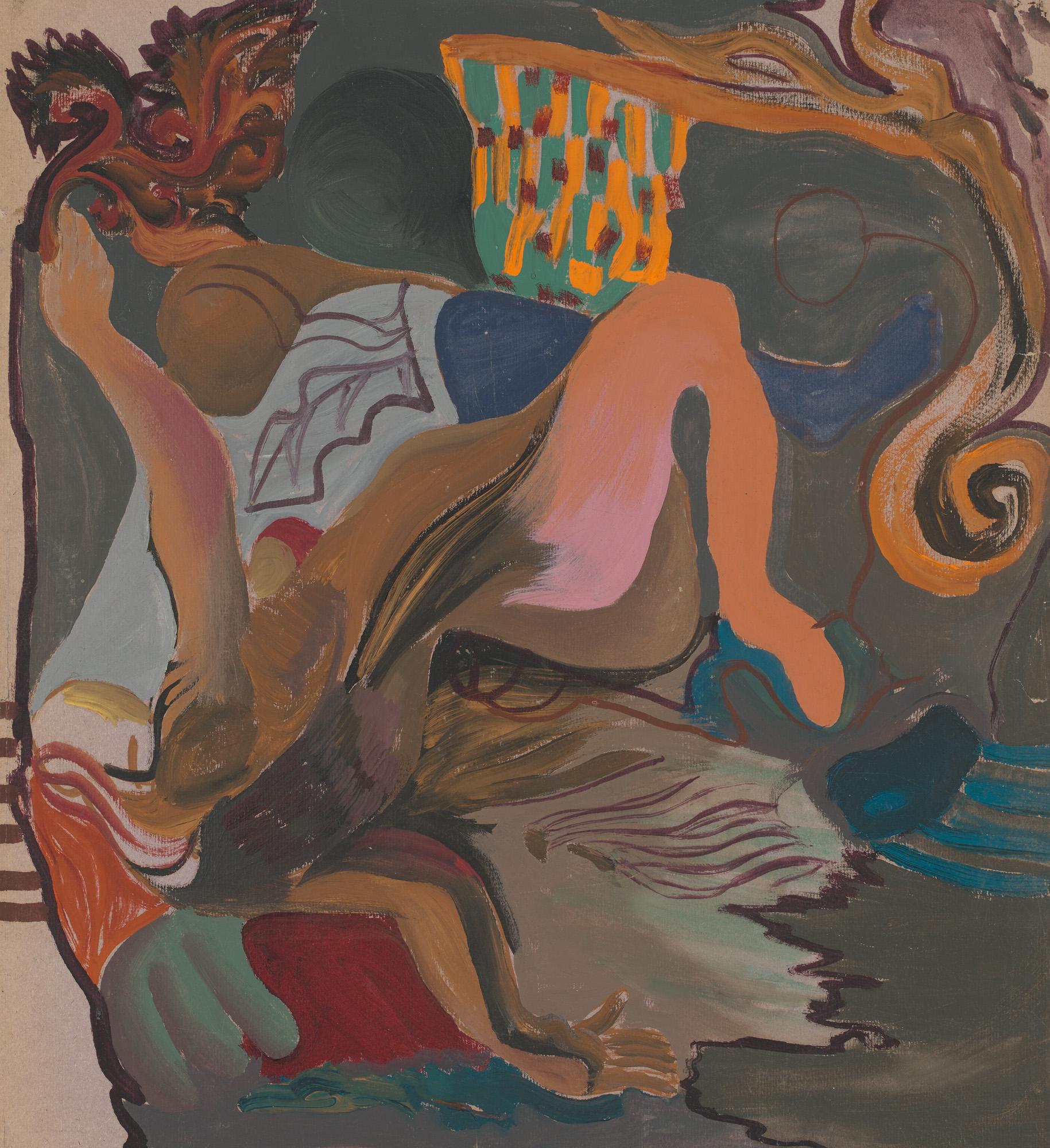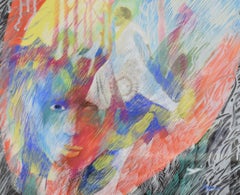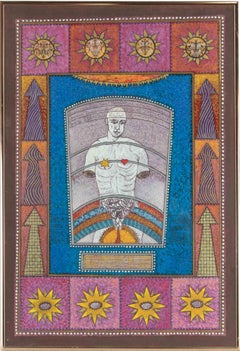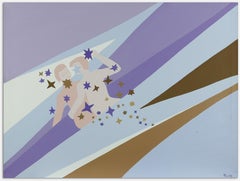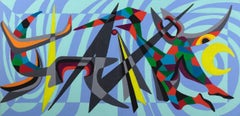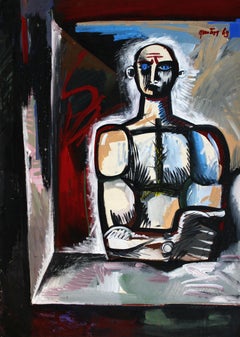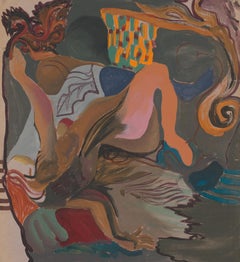Items Similar to Constellation - Original Tempera on Paper by M. Bertrand-Picard - 1960s
Want more images or videos?
Request additional images or videos from the seller
1 of 4
Monique Bertrand-PicardConstellation - Original Tempera on Paper by M. Bertrand-Picard - 1960s1960s
1960s
$411.08
$587.2630% Off
£313.85
£448.3530% Off
€350
€50030% Off
CA$580.42
CA$829.1730% Off
A$636.94
A$909.9130% Off
CHF 332.68
CHF 475.2530% Off
MX$7,615.30
MX$10,87930% Off
NOK 4,213.93
NOK 6,019.9030% Off
SEK 3,930.28
SEK 5,614.6930% Off
DKK 2,666.29
DKK 3,808.9930% Off
About the Item
Constellation is beautiful original painting in tempera on paper realized by Monique Bertrand-Picard.
In good conditions, except for some folding.
The artwork represents a composition in bright and vivid multi-color with men and stars, created through the strong and confident strokes, with particular attention to the pictorial surface expressed in a dynamic and harmonic composition, an enjoyable modern artwork.
- Creator:Monique Bertrand-Picard (1924)
- Creation Year:1960s
- Dimensions:Height: 11.82 in (30 cm)Width: 9.85 in (25 cm)Depth: 0.08 in (2 mm)
- Medium:
- Period:
- Framing:Framing Options Available
- Condition:Insurance may be requested by customers as additional service, contact us for more information.
- Gallery Location:Roma, IT
- Reference Number:Seller: M-1104281stDibs: LU65036994722
About the Seller
4.9
Platinum Seller
Premium sellers with a 4.7+ rating and 24-hour response times
1stDibs seller since 2017
7,824 sales on 1stDibs
Typical response time: 1 hour
- ShippingRetrieving quote...Shipping from: Roma, Italy
- Return Policy
More From This Seller
View AllDefilé - Original Tempera by Danilo Bergamo - 1970s
By Danilo Bergamo
Located in Roma, IT
Defilè is an original mixed colored tempera on cardboard realized by Danilo Bergamo in 1970s..
Hand signed on the lower right margin...
Category
1970s Abstract Paintings
Materials
Tempera
Man and Universe - Oil Paint by Mino Meno - 1970s
Located in Roma, IT
Mixed media on plywood realized in 1970s.
Includes a wooden frame cm. 52x35.5.
Very good condition.
Category
1970s Modern Abstract Paintings
Materials
Oil
Gemini - Acrylic on Canvas by Genny Puccini - 1973
Located in Roma, IT
Gemini is a contemporary artwork realized in 1973 by Genny Puccini.
Mixed colored acrylic on canvas.
Hand signed and dated on the lower margin and on t...
Category
1970s Abstract Abstract Paintings
Materials
Acrylic
Colore - Tempera by Leo Guida - 1970s
By Leo Guida
Located in Roma, IT
Colore is an original Contemporary artwork realized in the 1970s by the italian artist Leo Guida (1992 - 2017).
Original Painting in Tempera.
Total dimensions: 70 x 0.1 x 40 cm.
T...
Category
1970s Abstract Abstract Paintings
Materials
Tempera
Composition - Tempera on Paper by Mario Martini - 1970
Located in Roma, IT
Composition is an original contemporary artwork realized by Mario Martini in 1970.
Original drawing in tempera on paper.
Good conditions except for some folding and stains that don...
Category
1970s Contemporary Abstract Drawings and Watercolors
Materials
Tempera
The Runner - Original Tempera on Paper by Maurice Rouzée - 1940s
By Maurice Rouzée
Located in Roma, IT
The Runner is an original artwork realized by Maurice Rouzée in the 1940s. Signed by the artist on the upper left margin. Good conditions, except for a sma...
Category
1940s Figurative Paintings
Materials
Tempera
You May Also Like
Constellation number 13, Painting, Oil on Paper
By Federico Cortese
Located in Yardley, PA
An original piece from the series “Embroideriesâ€
Category
2010s Abstract Abstract Paintings
Materials
Oil
Helen Steinthal (1911-1991) - Double Sided 20th Century Acrylic, Above Water
Located in Corsham, GB
This captivating acrylic depicts figures dancing on mass, above a tropical river at night. Colour and repeat imagery bring a tribal feel to the scene, full of curiosity and wonder. T...
Category
20th Century Figurative Paintings
Materials
Acrylic
$338 Sale Price
20% Off
Ideologist. 1968, gouache on paper, 86x61 cm
Located in Riga, LV
Ideologist
1968, gouache on paper, 86x61 cm
Gunars Klava (1933 – 1989)
Gunars Klava was born in 1933 in Priekule.
1953 - graduated from J. Rosenthal Art School
1964 - began to pa...
Category
1960s Abstract Expressionist Figurative Paintings
Materials
Paper, Gouache
$1,634 Sale Price
20% Off
Untitled. 1970. Cardboard, tempera. 49.8x54.5cm
By Vladimir Glushenkov
Located in Riga, LV
Vladimir Glushenkov (1948-2009)
(May 21, 1948, Riga - December 26, 2009, Riga) - painter, graphic artist, poet, translator.
Vladimir Glushkenkov was born in family with Russian-Poli...
Category
1970s Expressionist Abstract Paintings
Materials
Tempera, Cardboard
$2,255 Sale Price
20% Off
Constellation number 12, Painting, Oil on Paper
By Federico Cortese
Located in Yardley, PA
An original piece from the series “Embroideriesâ€
Category
2010s Abstract Abstract Paintings
Materials
Oil
Cai, Unknown Artist, Tempera on Paper, Abstract Composition, Dated 1973
Located in København, Copenhagen
CAI, unknown artist. Tempera on paper. Abstract composition. Dated 1973.
The paper measures: 48 x 42 cm.
The frame measures: 1.5 cm.
In excellent condition.
Signed and dated.
Category
Vintage 1970s Unknown Paintings
Materials
Other
$490 Sale Price
30% Off
